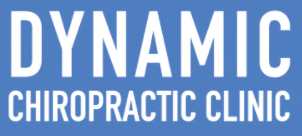Ribs and Rib Pain
Rib issues are one of the most common issues patients present to my office with.
They say the pain resembles a “knife or in the back” off to the side of their spine. Often the pain is much, much worse at the end of a deep breath, restricting breathing and causing the characteristic “ice pick in the back” feeling. It’s been my experience that more issues occur on the non-dominant handed side, for reasons I can’t really put my finger on. (That’s chiropractically funny, because we can put our finger on it.)
Anatomy:
There are (normally) twelve sets of ribs in the spine, all attached to the thoracic vertebrae, by what we call the costovertebral joint. (costo: rib, vertebral:vertebra) The ribs attach to the vertebrae in two places, one on the body of the vertebra, and once again on its “arms”, also called the transverse process. The rib actually connects in many cases to two vertebrae, one half above and one half below. We call this a demifacet, or half joint.
Anyone who has eaten barbequed ribs can describe the anatomy of the ribs… there are criss-crossed muscles that form a matrix of muscle between the rib bones. There is a small white structure that lies between them that fires off these muscles; that’s called the intercostal nerve.
An upright “normal” posture helps keep the ribs aligned and in position. A flexed posture, or better yet, a flexed and rotated position, forces the ribs backwards and stretches the costovertebral joint… resulting with PAIN. Some of my patients note that their pain als has a tingly numbness that can go down their arm, so its easy to see why this can be unsettling…. Since rib pain is so intense, with associated numbness in the arm, and many writers think that cases of rib pain, especially on the left side are the reason for up to 40% emergency room admissions, thinking they are having a heart attack. (This is certainly NOT to say that if you are having chest pain with numbness in the arm you should wait to see a chiropractor…. if you suspect you are having heart problems, go to the emergency room immediately.)
Fixing the problem:
(You can read the whole thing, or just read the next two sentences…)
– A forward curved, flexed, “hunched” posture causes the problem.
– Extension, both globally (over the whole back) and locally (at the point of pain) is the solution.
Computer work is a great way to GET rib problems, especially if you are hunched over at your work station. So is lifting asymmetrically, such as lifting a baby, or.
Chiropractors like me focus on the arm joint, or costovertebral joint on the arms of the vertebra. There really aren’t any truly definitive tests for rib problems other than pushing on them to see if they elicit pain, so it often depends on the chiropractor (an unknown quantity, except in our office) you go see for the precision of this method.
Adjusting of the joint is the best way to reduce the pain, but this is a double edged sword, in that the joint is inflamed already and adjusting pushes on that joint, a recipe for pain.
There are a number of things you can do to help yourself out if you have this problem, and they all share one motion : extension.
Extension is bending backwards, usually over something. The bigger the object, the less specific it is. So a physioball is great, but nonspecific. Yoga is even less so. But a foam roller is more specific, and a tennis ball is even more so. Chiropractic adjusting, therefore, is like a laser for its specificity, and really has no compare in treatment.
Unfortunately, rib pain is not something that is miraculously cured on the first visit to a chiropractor. It typically takes three to five visits to get past this, and can be shortened (if the exercises are done) or longer, if the motions that cause the rib to misalign are continued.
Nor is the treatment all that fun, (again, did I mention it hurts?) as the pain from a rib joint can be worsened when moving the bone back into position. Please know that going in, the treatment will not be all that much fun, but will diminish as time goes on, and that by treating the problem, the pain will go away much faster than without treatment.
